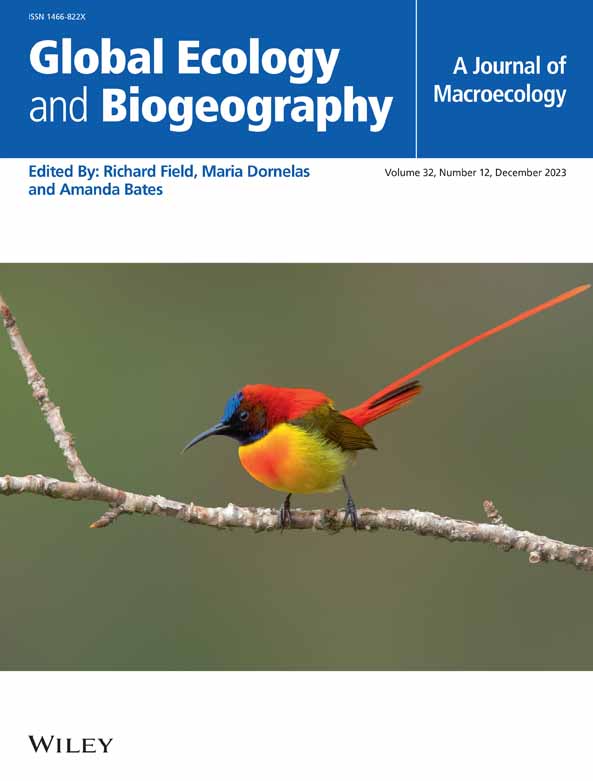Soil Temperatures Predict Smaller Niche Shifts Than Air Temperatures in Introduced Ant Species
Abstract
Aim
Introduced species can establish in climates outside of their native niche and undergo ‘niche shifts’. However, studies of niche shifts generally rely on above-ground climate data, neglecting the potential buffering effect of ground-level or soil climates.
Location
Global.
Time Period
Present.
Major Taxa Studied
Formicidae.
Methods
Here, we investigated the impact of soil temperatures on niche shifts in 95 introduced ant species using both ordination and hypervolume-based approaches. We compared niche shifts using air temperature and soil temperature.
Results
Overall, between 65.2% and 82% of species (depending on the metric) exhibited smaller niche shifts when considering soil temperature, with varying levels of correlation between air- and soil-temperature niche shifts across species (Correlation coefficient range: 0.56–0.73). Furthermore, air and soil climate conditions were generally more uncoupled than expected at random. This suggests that species use microrefugia and that this may explain the lower levels of niche shifts observed when using microclimatic conditions. Ecological traits, nesting type, forest cover and spatial spread did not consistently impact the differences across metrics in soil temperature buffering of niche shifts among species. This highlights the need for experimental microclimatic research to explore species differences in air- versus ground-climatic niche shifts.
Main Conclusions
We overall highlight the importance of incorporating ecologically relevant microclimatic data, particularly for small, ground-dwelling organisms like ants. This study emphasises the ongoing need for a nuanced understanding of the intricate interplay between air and soil temperatures in the context of niche dynamics. Ultimately, soil-level datasets may improve habitat suitability models, leading to more accurate predictions of establishment success for introduced species.

 求助内容:
求助内容: 应助结果提醒方式:
应助结果提醒方式:


